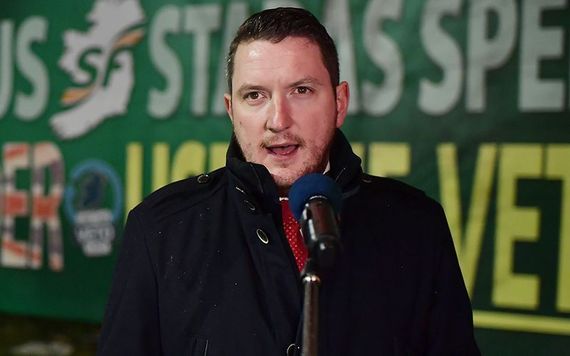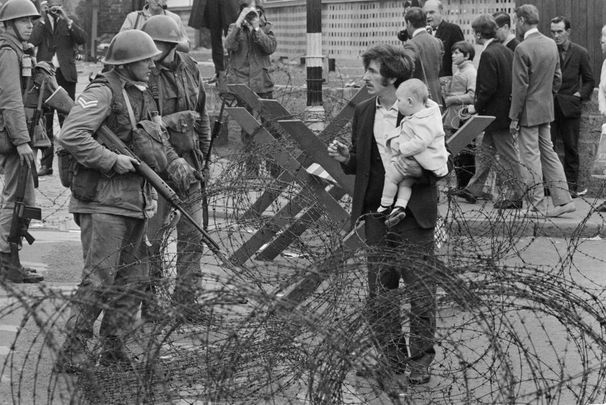The Police Ombudsman's latest report is just further proof that police collusion during the Troubles in Northern Ireland was not just a case of a "few bad apples" but "refined and well-practiced".
His name was Aidan Wallace. Smaller than most of us. We knew him as “Wee Wally”. We were in school together. Sports mad and an obsessive supporter of Tottenham Hotspurs. He would defend his team against the legions of schoolboy Liverpool, Man United, and Celtic supporters. Despite his size, he made the school soccer team. I never made the cut as I am reminded every time our old school friends meet.
I lost touch with him when school was over until his name was announced on the radio.
Aidan Wallace was killed at the age of 22. Gunned down in a random sectarian attack as he played snooker with his sixteen-year-old brother. It was three days before Christmas in 1991. A loyalist gang, the UFF, burst into the bar, firing indiscriminately injuring three, including a 12-year-old boy, and killing Aidan. He didn’t even see them coming, he was bent over the table to make a pot. He was shot twice in the back of the head.
Read more
At the time it appeared that these gangs could operate with impunity. A Police Ombudsman report issued last week confirms that they did operate with impunity and in collusion with the police.
The gang responsible were police agents, recruited and paid by the RUC Special Branch. Special Brach held back intelligence on the murders from the investigating teams. Evidence was lost and documents were destroyed. Special Branch officers serving at the time refused to cooperate with the investigation.
The gun used to kill Aidan was subsequently used in a mass shooting by the same gang which left five people dead and many others injured in a bookmarkers shop on the Ormeau Road. The gun was a military issue Browning had been reported missing from a British Army base, in Belfast, when it had been handed to loyalists at the direction of the RUC Special Branch.
A special Branch agent, Ken Barret (who was involved in the killing of Pat Finucane), had been directed by his handler to go to the base where he was handed rifles and two Browning handguns.
He then gave the guns to Willam Stobie another Special Branch agent and quartermaster for a UFF gang. Stobie then handed the Browning handgun to his Special Branch handlers.
The gun along with others was now in the procession of the police. The police claimed to have “deactivated” the handgun and not some of the others. Incredibly all the weapons were returned to the gang. The Browning handgun was used in the killing of six and attempted murder.
No one has been convicted of these murders. The leader of the UFF in South Belfast was outed as an agent by his own organization and fled the country under the protection of his handlers.
This was the latest of a series of reports from across the North of Ireland that found that the RUC Special Branch was involved in recruiting and paying known killers. They facilitated the arming of the gangs, provided intelligence on targets, and cover up their actions.
As John Finucane MP said this week, “This was not a failure in policy. This was policy. This was the system working as it was designed to do.”

John Finucane MP
It was not the case of a few bad apples. Collusion has been identified in a series of Police Ombudsman's Reports covering different times and across geographic areas. It was refined and well-practiced.
It is inconceivable that the RUC members and the leadership of the police were unaware of the activities of the Special Branch. They either turned a blind eye or missed criminality in their ranks. Silence was complicity and incompetence no excuse for a coverup.
It is hoped that the findings of the Ombudsman might bring some vindication and comfort to the families bereaved and those left injured. It should lead to further judicial inquiries and criminal investigations.
Collusion is irrefutable. The finding that the Police (the Police Ombundunsman has no jurisdiction of the military) were involved in mass murders is a fundamental challenge to one of the key narratives of our past.
It puts pay to the lie that the police and army were there to keep the peace between republicans and loyalists. The state drew on any means possible, coercive law, propaganda, brutality and torture, extrajudicial executions, and the arming and directing of loyalist paramilitaries in their war against Irish Republicans. The police and military drew on the sectarian urges of loyalists to target individuals and terrorize a community.
The conflict of the past was brutal. There is no glory in war it was a failing of politics and good people died from all sides and none.
Political Unionism and the British Government are in denial on the level of collusion. Somehow the truth keeps coming out.
* Ciaran Quinn is Sinn Fein’s representative in the US.

Love Irish history? Share your favorite stories with other history buffs in the IrishCentral History Facebook group.




Comments